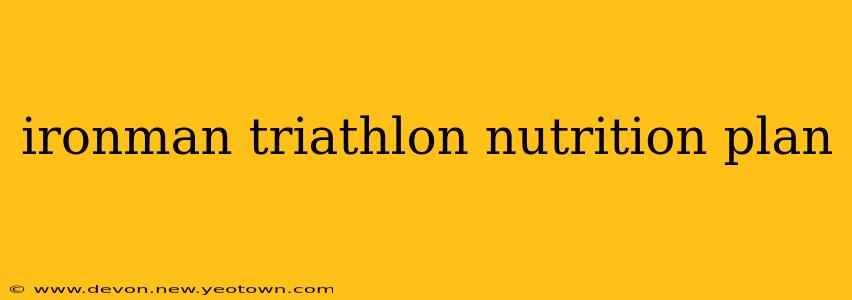The Ironman triathlon. Just the name conjures images of superhuman endurance, relentless training, and unwavering dedication. But behind every incredible finish line crossing is a meticulously planned nutrition strategy. This isn't just about eating enough; it's about fueling your body strategically throughout the grueling 140.6-mile journey. This isn't a generic plan—it's a roadmap to optimize your performance, prevent bonking, and help you conquer your Ironman dreams.
My name is Alex, and I've completed three Ironman races myself. I've learned firsthand the critical role nutrition plays, and I'm here to share the insights and strategies that helped me cross the finish line. This plan will cover everything from weeks leading up to race day to what you should consume during each leg of the race.
What to Eat Weeks Before the Ironman
The weeks leading up to your race are crucial for establishing your nutritional baseline and refining your race-day fueling strategy. You shouldn't be experimenting with new foods or drastically altering your diet in the final weeks. Instead, focus on consistency and fine-tuning what works best for you.
This period is all about carbohydrate loading, but not in the way you might think. Forget the pasta-a-thon stereotype. It's about consistently consuming sufficient carbohydrates to maximize glycogen stores in your muscles and liver. This is done through a balanced approach that combines complex carbohydrates (think whole grains, fruits, vegetables) with moderate protein and healthy fats. This ensures you have sustained energy and reduce the risk of gastrointestinal issues.
What Should I Eat the Day Before the Ironman?
The day before your Ironman is all about maintaining a balanced diet that is easy to digest. You want foods that won't upset your stomach and provide sustained energy without being too heavy. Think easily digestible carbohydrates like white rice, potatoes, or easily digestible pasta. Pair this with lean protein such as grilled chicken or fish. Avoid anything new, spicy, or high in fiber.
Hydration is key! Start hydrating early and continue throughout the day. This isn't about chugging gallons of water, but about consistently replenishing fluids.
What to Eat During the Ironman: A Race-Day Nutrition Guide
This is where the real precision comes in. You'll need a carefully planned nutrition strategy for each leg of the race:
Swim:
The swim is relatively short, and most athletes don't need extra fuel during this segment. Focus on hydration before the start and maybe a quick sip of water or electrolyte drink midway if the swim is exceptionally long.
Bike:
This is where your nutritional plan really shines. The bike leg is long and requires consistent fuel intake. Aim for approximately 250-300 calories per hour, depending on your individual needs and intensity. This can come from energy gels, chews, or even easily digested solid foods like bananas or energy bars. Pay close attention to electrolyte balance, as you'll lose significant sodium and other minerals through sweat.
Run:
The run leg demands a slightly different approach. Your stomach may be more sensitive after the bike leg, so opt for smaller, more frequent servings of easily digestible carbohydrates. Continue with electrolytes to maintain hydration and prevent cramping. Energy gels or chews are often preferred due to their ease of consumption and quick digestion.
What Drinks Should I Use During an Ironman?
Hydration and electrolyte replenishment are non-negotiable. Throughout the race, consume a sports drink with electrolytes, focusing on sodium replenishment. Water alone isn't sufficient to combat the loss of electrolytes through sweat. The specific ratios of carbohydrates and electrolytes will vary depending on individual needs and sweat rates, but a balanced electrolyte drink is crucial.
What Are Some Common Ironman Nutrition Mistakes?
Many athletes make common mistakes that can sabotage their race day performance. Here are a few to avoid:
- Underfueling: Not consuming enough calories during the race, leading to "bonking" or hitting the wall.
- Ignoring Electrolytes: Neglecting electrolyte replacement can lead to cramping, fatigue, and potentially serious health issues.
- Trying New Foods on Race Day: Experimenting with new foods or supplements during the race can cause unexpected digestive upset.
- Insufficient Hydration: Dehydration is a major performance limiter.
The Bottom Line: Personalized Nutrition is Key
This Ironman nutrition plan provides a framework, but remember that every athlete is different. The best approach is to experiment with different foods and strategies during training to find what works best for your individual needs and tolerances. Consider consulting a registered dietitian or sports nutritionist for personalized guidance to create a plan tailored to your specific requirements. Remember that proper nutrition is just one piece of the puzzle; combining it with diligent training and mental preparation will significantly improve your chances of success!

